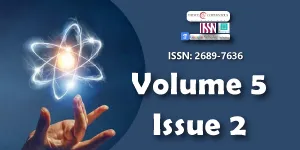From Engle & Granger model to Johansen model for a more accurate photovoltaic power output forecast
Main Article Content
Abstract
The French government has recently decided to increase the Photovoltaic (PV) capacities to reach 35GW by 2028 in all french territories, the European territory, and overseas territories such as Reunion Island in the Indian Ocean. However, integrating growing numbers of PV power installations and microgrids onto the grid can result in larger-than-expected fluctuations in grid frequency. This is due to PV power output that is not only a function of the operating temperature and solar irradiation but also of other environmental parameters. In this paper, only two environmental parameters are considered in the European zone and when the Engle & Granger statistical method is used, a relationship between variables such as photovoltaic power output and solar irradiation at a different level is obtained. The final relationship without suspicious heteroscedasticity is determined. The model is formulated on the basis of photovoltaic real conditions statistical approach and is more realistic than steady approach models. The Engle & Granger method does not distinguish several cointegration relationships when more variables are considered. For the overseas zone, we added other measured environmental variables and applied a more robust statistical method known as the Johansen vector error correction model (VECM) cointegration approach. In the VECM model, for N explanatory variables and for N > 2, we established a long-run equilibrium relationship that has been tested and the outcome is more than reliable when comparing the model to measured data.
Downloads
Article Details
Copyright (c) 2022 Ramenah H.

This work is licensed under a Creative Commons Attribution 4.0 International License.
Licensing and protecting the author rights is the central aim and core of the publishing business. Peertechz dedicates itself in making it easier for people to share and build upon the work of others while maintaining consistency with the rules of copyright. Peertechz licensing terms are formulated to facilitate reuse of the manuscripts published in journals to take maximum advantage of Open Access publication and for the purpose of disseminating knowledge.
We support 'libre' open access, which defines Open Access in true terms as free of charge online access along with usage rights. The usage rights are granted through the use of specific Creative Commons license.
Peertechz accomplice with- [CC BY 4.0]
Explanation
'CC' stands for Creative Commons license. 'BY' symbolizes that users have provided attribution to the creator that the published manuscripts can be used or shared. This license allows for redistribution, commercial and non-commercial, as long as it is passed along unchanged and in whole, with credit to the author.
Please take in notification that Creative Commons user licenses are non-revocable. We recommend authors to check if their funding body requires a specific license.
With this license, the authors are allowed that after publishing with Peertechz, they can share their research by posting a free draft copy of their article to any repository or website.
'CC BY' license observance:
|
License Name |
Permission to read and download |
Permission to display in a repository |
Permission to translate |
Commercial uses of manuscript |
|
CC BY 4.0 |
Yes |
Yes |
Yes |
Yes |
The authors please note that Creative Commons license is focused on making creative works available for discovery and reuse. Creative Commons licenses provide an alternative to standard copyrights, allowing authors to specify ways that their works can be used without having to grant permission for each individual request. Others who want to reserve all of their rights under copyright law should not use CC licenses.
Coban HH, Rehman A, Mohamed A. Technical and economical investigation of a centralized and decentralized hybrid renewable energy system in cadaado, somalia, processes. 2022; 10(4):667. HTTPS://DOI.ORG/10.3390/PR10040667
Coban HH. While covid-19 outbreak affects economies and societies; exploring the energy demand in turkey. year. 2021; 11:126–135. HTTPS://DOI.ORG/10.36222/EJT.894463
Engle RF,Granger CWJ. co-integration and error correction: representation, estimation, and testing. essays in econometrics. harvard university press 1987 ; 251–276.
Granger CWJ, Weiss AA. Time series analysis of error-correction. karlin s, amemiya t, goodman la, éds. studies in econometrics, time series, and multivariate statistics, academic press. 1983; 255–278.
Gujarati DN. Basic of econometric, fourth edition. the mcgraw-hill econometrics, fourth companies. 2004.
applied economic time series wiley series in probability and statistics.1995; 420.
Hassani H, Yeganegi MR. Sum of squared acf and the ljung–box statistics. Phys a: Stat Mech Appl. 2019; 520: 81–86.
Ljung GM. Box Gep on a measure of lack of fit in time series models. Biometrika. 1978; 65:297–303.
Ramenah H, Casin P, Ba M, Benne M, Tanougast C. accurate determination of parameters relationship for photovoltaic power output by augmented dickey fuller test and engle granger method, AIMS-energy. 2018; DOI: 10.3934/ENERGY.2018.1.19
Johansen S. Statistical analysis of cointegration vectors. J Econ Dyn Control .1988; 12: 231–254.
Johansen S. Estimation and hypothesis testing of cointegration vectors in gaussian vector autoregressive models. econometrica. 1991; 59: 1551–1580.
Johansen S. Likelihood-based inference in cointegrated vector autoregressive models. new york: Ooxford University Press. 1995.
Cornillon PA. Regression theorie & application, springer, 2007.
Hamilton JD. Time series analysis. princeton university press. 1994; 767–768.
Ramenah H, Tanougast C. Techniques of the green platform for research activities. (IOSR Journal of environmental science 2019. DOI:10.9790/2402-1312023241.
Long JS, Ervin LH. Using heteroscedasticity consistent standard errors in the linear regression model. the american statistician. 2000; 54: 217-24.

